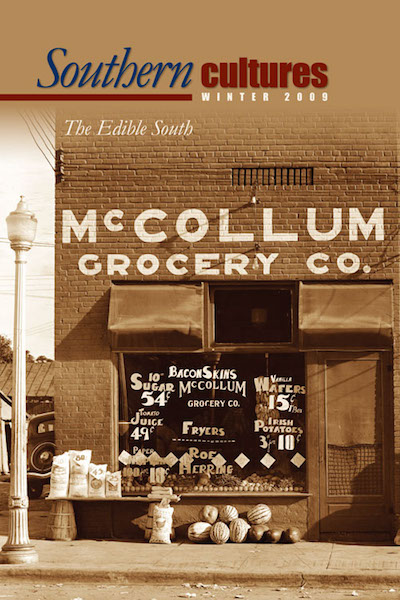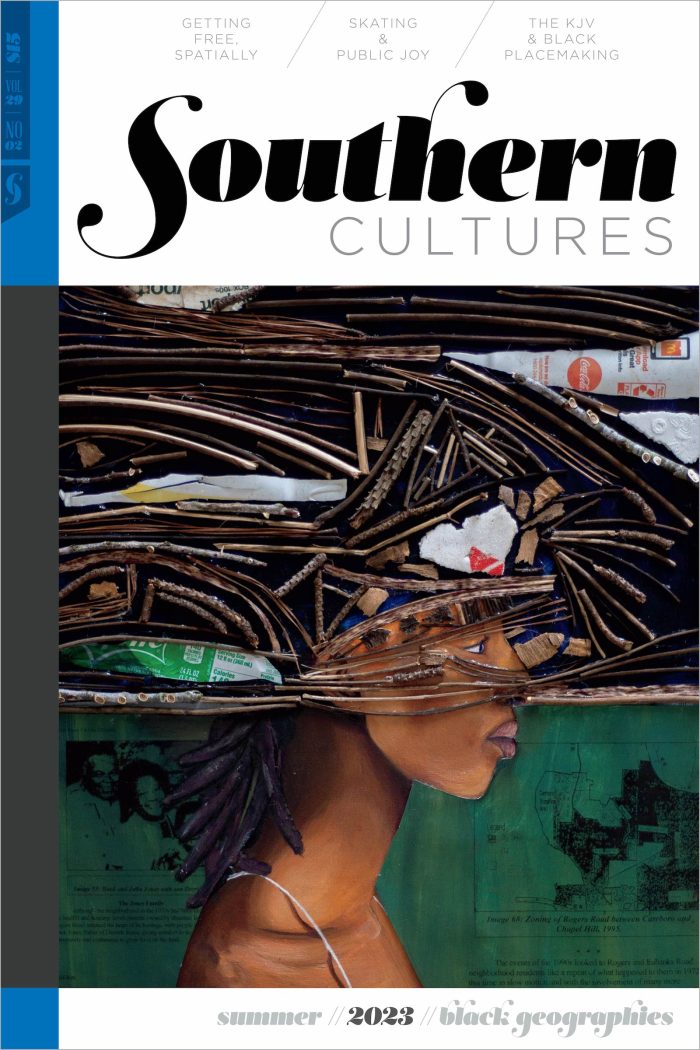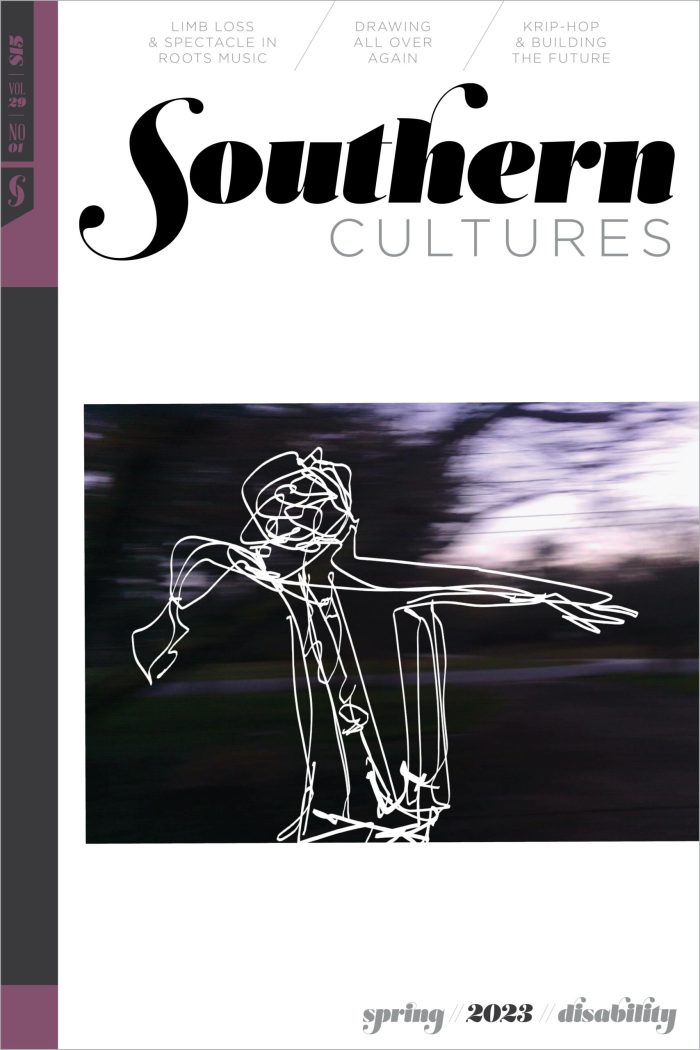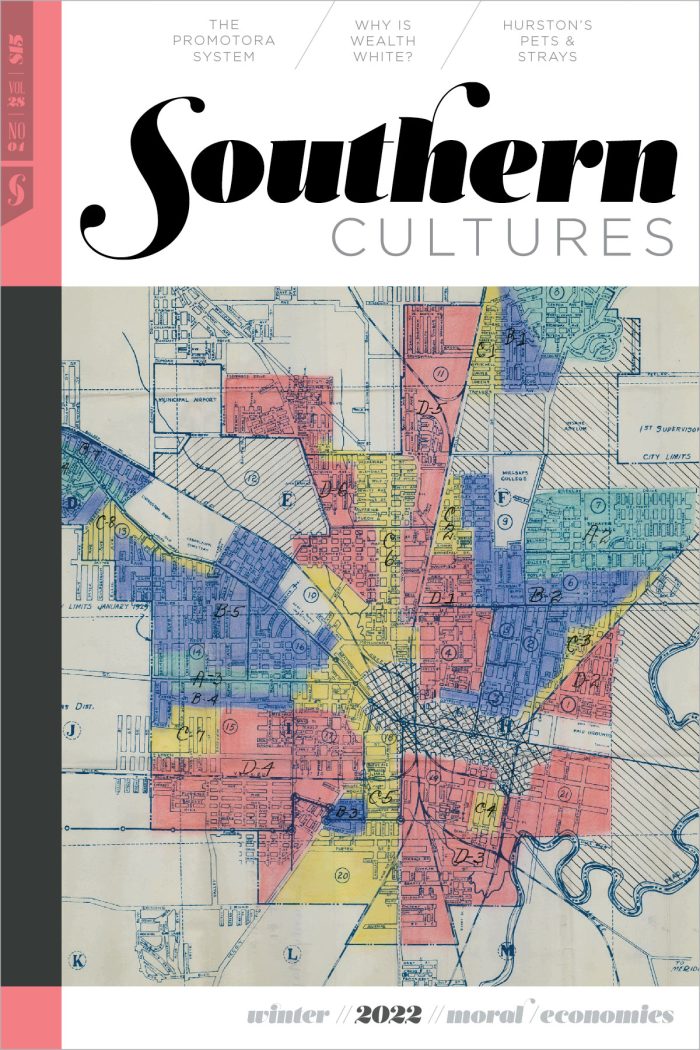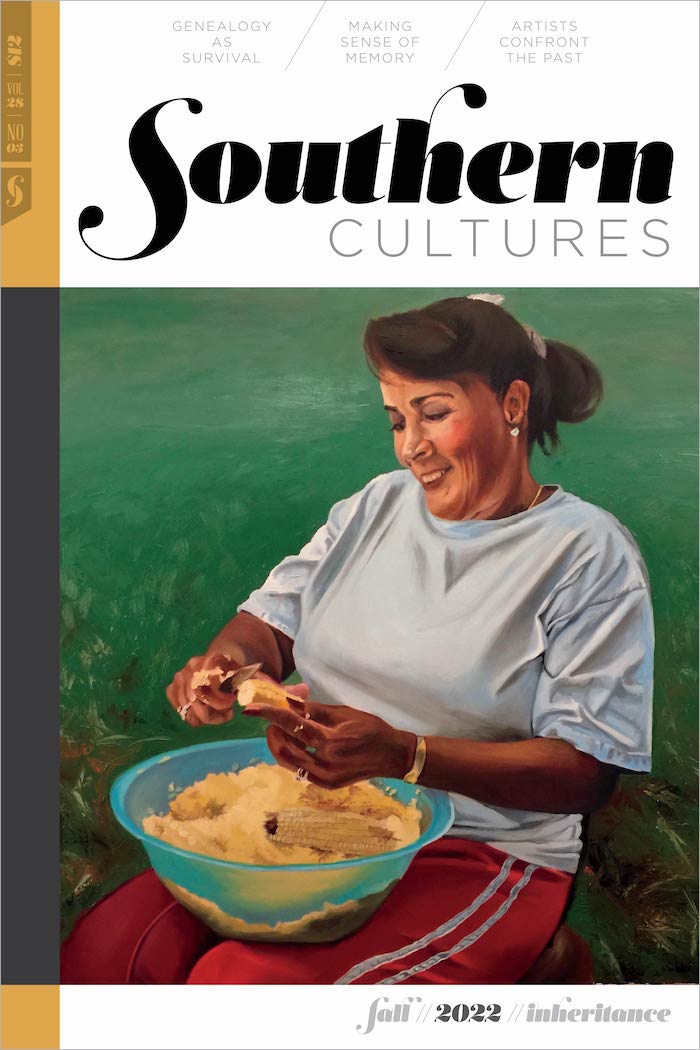BUY ACCESS
by Harry L. Watson
“We parted in a warm, brotherly agreement about the ambrosial qualities of great down-home cooking, and I drove off shaking my head over people who could share so much around the table yet struggle so bitterly over other things.” Some years ago, I participated in a frank and comradely exchange of views on the late »
BUY ACCESS
by Marcie Cohen Ferris
“Even as southern populations (and landscapes) have evolved, food and place remain indelibly linked in the southern imagination.” My mother-in-law, Shelby Flowers Ferris, has kept a daily journal for over forty years. These are not personal diaries in which she shares her “feelings”—which I imagine seem self-indulgent to such a practical woman—but rather carefully recorded »
BUY ACCESS
by Kathleen Purvis
“What you have in your hands isn’t just a list of memories and tastes. It’s an act of bravery akin to holding a lit stick of TNT.” You might want to handle these pages carefully. What you have in your hands isn’t just a list of memories and tastes. It’s an act of bravery akin »
BUY ACCESS
by Bernard L. Herman
Oh Violet, keep the head on the fish, because I want my eyeballs. The Eastern Shore of Virginia, a long narrow peninsula, projects roughly seventy miles southward from the Maryland state line to the mouth of the Chesapeake Bay. The Atlantic Ocean bounds the two counties (Northampton and Accomack) on the east and the Chesapeake »
BUY ACCESS
by Drew A. Swanson
“The plantation’s residents were such voracious drinkers that the remains of wine bottles were the most reliable way to date colonial discoveries during excavation of the old fort site.” Visitors to Wormsloe Historic Site near Savannah, Georgia, enter what appears to be an impressively preserved Old South plantation. Guests pass through a massive stone and »
BUY ACCESS
by Amy C. Evans
“He was forced into retirement after Hurricane Katrina, but ‘The Professor,’ as he’s known, is still a walking encyclopedia of New Orleans cocktail history.” As the oral historian for the Southern Foodways Alliance, I collect the stories behind the food. I travel the region to document everything from barbecue to boudin, catfish to caramel cake. »
Essay
The Girls' Tomato Club Movement
by Elizabeth S. D. Engelhardt
In 1909, Mare Samuella Cromer, a young rural schoolteacher in the western South Carolina town of Aiken, heard a speech about Seaman A. Knapp’s boys’ corn clubs that were transforming southern crop yields. Knapp, a scholar originally from the Midwest but working in Texas and the larger South, created the blueprint for the turn-of-the-century U.S. »
BUY ACCESS
by Whitney E. Brown
“There is a deep, pulsing current of heritage and emotion when your hands are in the dirt, and that’s a feeling worth recapturing in the age of the iPhone.” It’s not every woman who renders her own lard, or cries over Kentucky Wonder beans. April McGreger, however, dwells in vital, dynamic realms of southern food, »
BUY ACCESS
by John T. Edge
“‘My cooking is referred to as yo-yo cooking, because the recipes found in this book will make your drawers drop down to your knees and pop back up to your neck.'” Few libraries in the American South host compelling foodways collections. Texas Woman’s University in Denton is a defensible exception. So is the Atlanta History »
BUY ACCESS
by Beth A. Latshaw
“‘I’ve eaten it all my life, and I’m not dead yet.'” Southern writer John Egerton has called it “central to the region’s image, its personality, and its character,” naming it as “an esthetic wonder, a sensory delight, [and even a] mystical experience.” It is said to be innovative, artistic, and inspiring. It has been described »
BUY ACCESS
by Michael McFee
“. . . where fat becomes faith, where juice conveys grace . . .” Meat grease, flour and water, stirred till smooth—it’s what my forebears ate, if they were lucky.
BUY ACCESS
by Mary Ann Sternberg
“‘Your cookbook,’ she related with obvious pride, ‘was published in 1897.'” After a hiatus of many years, it’s my turn to host the family Thanksgiving—a perfect opportunity to introduce my new daughter-in-law and several grown-up nieces and nephews to Great Aunt Adele.
BUY ACCESS
by Elizabeth M. Williams
“All self-respecting Sicilians disdained red gravy.” When I was very young, living in New Orleans, Sunday dinner at Big Nana’s was chicken cacciatore or pasta e fagioli or veal Bolognese. There was always an array of olive salad, stuffed artichokes, caponata, fava beans, and seasonal treats. My Nana and her eight sisters and brothers and »
